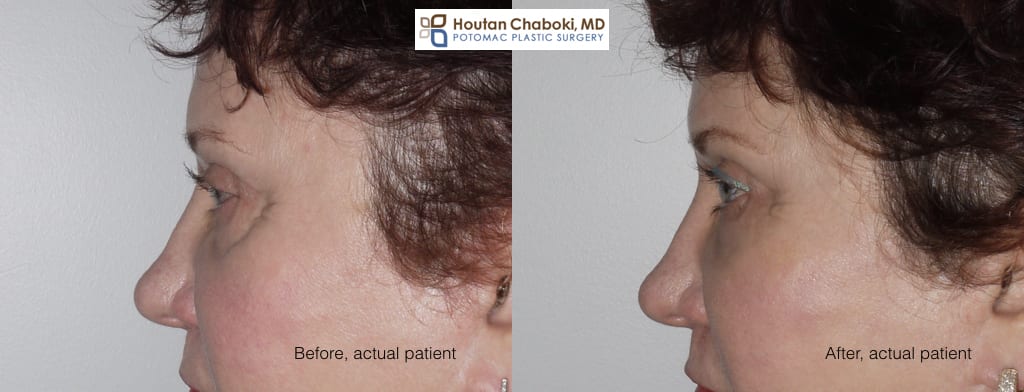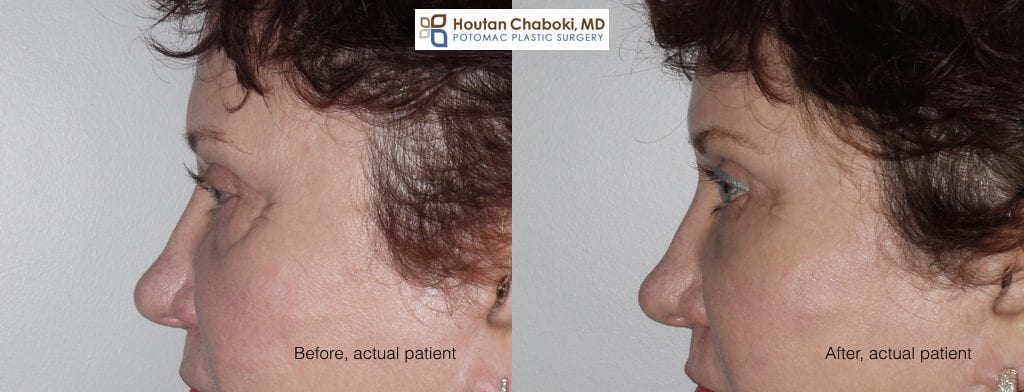
Before and after liquid facelift with facial filler. Injections of soft gel used to enhance the lower eyelid dark circles and wrinkles.
Nonsurgical cosmetic treatments performed in the office with minimal downtime continue to increase in popularity. Washington DC plastic surgery patients try to avoid surgery if possible and often choose liquid facelift procedures such as Botox®, Dysport®, and facial fillers (ex. Juvederm®, Restylane®, Belotero®) to enhance their appearance. With all these nonsurgical office injections available, it can be confusing to patients as to what is best.
Botox or Dysport in Liquid Facelift
Botox and Dysport are treatments that relax muscles and subsequently are used broadly in the face and neck areas by top plastic surgeons and dermatologists. These injections can be used to relax muscles that contribute wrinkles (ex. forehead), reshape and sculpt the face (ex. jaw reduction), or conservatively lift tissue (ex. brow lift or neck lift). Botox and Dysport have even been used to treat the nose in nonsurgical rhinoplasty and improve a gummy smile.
Downtime is minimal as patients can return to work the same day. Results after Botox or Dysport develop gradually over several days and typically last three months.
Facial fillers in Liquid Facelift
Facial fillers, on the other hand, are soft gels that add volume to the facial tissue. The effect of the fillers depends on factors such as specific facial area and tissue (ex. skin, fat, etc) treated. These fillers can be used in a variety of manners such as reducing fine wrinkles, filling deep folds, plumping thin lips, reducing under eye bags and dark circles, and enhancing sunken cheeks. Fillers have also been used for nonsurgical rhinoplasty and chin augmentation too.
Downtime is also minimal after facial fillers. Bruising and swelling, however, is typically more as compared to Botox or Dysport. Results are immediate, but it may take a couple weeks for the fillers to “settle”.
Liquid facelift procedures can be combined too. Patients may get Botox treatments around the eyes and Restylane treatments for dark circles in the same office visit. Ask your plastic surgeon or dermatologist about combination treatments.
Keep in mind that some patients may not be candidates for a liquid facelift. Some patients seek a permanent change or more dramatic change that plastic surgery might provide. We’ve reviewed excess skin and skin laxity as reasons that surgery may be required. Read more about skin laxity in facelift surgery.
Have you thought about having a liquid or nonsurgical facelift procedure? Speak with a facial plastic surgeon to review potential options that are appropriate for you. Share your questions below.


Leave a Reply